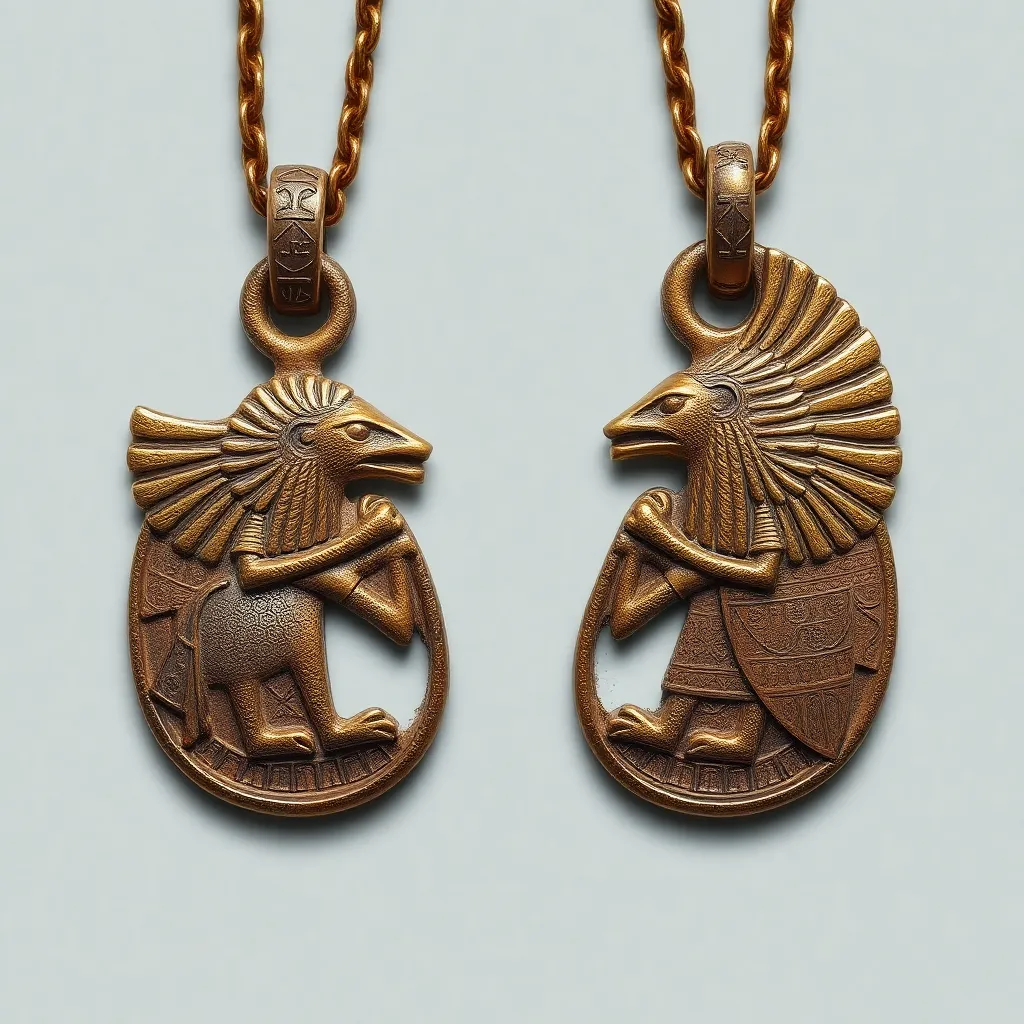Amulets for Protection Against Harm in Ancient Egypt
I. Introduction
Amulets have played a significant role in ancient cultures, serving as talismans believed to provide protection, luck, and healing. In ancient Egypt, the use of amulets was deeply intertwined with the civilization’s rich mythology and religious practices. Egyptians believed that these small objects could ward off harm, safeguard the wearer, and even influence the afterlife.
This article explores the historical context, types, symbolism, and rituals surrounding amulets in ancient Egypt, providing insights into their essential role in both daily life and burial practices.
II. Historical Context of Amulets in Ancient Egypt
The use of amulets in Egypt evolved significantly from the Predynastic period (c. 4000-3100 BCE) through the Greco-Roman periods (c. 332 BCE-395 CE). Initially, amulets were simple objects made from natural materials, but over time, they became more elaborate and were crafted from a variety of materials.
Amulets held cultural significance in everyday life, serving as personal protective charms. They were also integral to burial practices, placed with the deceased to ensure safety and favor in the afterlife.
III. Types of Protective Amulets
A. Common materials used in amulet creation
Amulets were crafted from a variety of materials, each chosen for its symbolic properties:
- Metals: Gold and silver were favored for their durability and association with divine beings.
- Stones: Semi-precious stones like lapis lazuli, turquoise, and carnelian were believed to have protective qualities.
- Faience: This glazed ceramic material was commonly used, as it could be molded into intricate shapes and symbols.
B. Specific amulets and their intended protective qualities
Several common types of amulets were widely recognized for their protective qualities:
- Scarabs: Symbolizing rebirth and transformation, scarab amulets were believed to protect the wearer from evil.
- Eye of Horus: Representing protection, health, and restoration, this symbol was commonly worn for safeguarding against harm.
- Ankh: The symbol of life, the ankh was worn to ensure longevity and vitality.
IV. Symbolism and Iconography
A. Explanation of symbols commonly found on amulets
Amulets were often inscribed or decorated with symbols that conveyed specific meanings. Common symbols included:
- Wings: Symbolized protection from divine forces.
- Snakes: Often depicted for their association with rebirth and protection.
- Lotus flowers: Represented purity and creation.
B. The role of deities and mythological figures in amulet design
Many amulets featured depictions of deities or mythological figures that were believed to offer protection. For example:
- Isis: The goddess of magic and motherhood, often invoked for protection.
- Thoth: The god of wisdom, associated with knowledge and safeguarding the deceased.
- Horus: The falcon-headed god, symbolizing power and protection.
V. Rituals and Beliefs Surrounding Amulets
A. The process of amulet creation and consecration
The creation of amulets was often accompanied by specific rituals to imbue them with protective powers. Craftsmen would chant prayers and invoke deities during the crafting process, ensuring that the amulet would serve its intended purpose.
B. Rituals associated with wearing and using amulets for protection
Once created, amulets were often consecrated before being worn. Rituals included:
- Offering prayers to the gods for protection.
- Incorporating the amulet into a specific ceremony, such as a wedding or childbirth.
VI. Amulets in Daily Life
A. Use of amulets by different social classes and professions
Amulets were worn by all levels of society, from pharaohs to commoners. They served various purposes:
- Pharaohs: Often wore elaborate amulets to symbolize their divine connection and authority.
- Common people: Utilized simpler amulets for daily protection against misfortune.
- Professionals: Certain trades, like craftsmen, wore specific amulets believed to enhance their skills or protect them from accidents.
B. Amulets as a form of personal and familial protection
Families often passed down amulets as heirlooms, believing they would provide continuous protection across generations. The personal connection to these objects made them cherished possessions.
VII. Amulets in the Afterlife
A. The significance of amulets in burial practices and tomb inscriptions
Amulets were placed in tombs with the deceased to ensure a safe passage to the afterlife. Specific amulets were chosen based on their protective qualities:
- Scarabs were often placed over the heart, symbolizing the journey to rebirth.
- Other amulets were inscribed with spells or prayers for protection against malevolent forces.
B. Beliefs about protection in the afterlife and divine judgment
Ancient Egyptians believed that amulets would protect them during the weighing of the heart ceremony, where Anubis would judge their souls. Successful judgment would grant them a peaceful afterlife, making amulets a vital part of funeral rituals.
VIII. Conclusion
In summary, amulets were of paramount importance in ancient Egyptian culture, serving as protective charms that transcended social classes and found significance in both everyday life and the afterlife. These small objects were not merely decorative; they were imbued with deep spiritual meanings and rituals that reflected the beliefs and values of the ancient Egyptians.
The legacy of ancient Egyptian amulets continues to resonate today, as modern practices often echo these ancient beliefs in protection and symbolism. The fascination with these artifacts remains strong, inviting exploration into the rich tapestry of ancient Egyptian mythology and spirituality.




